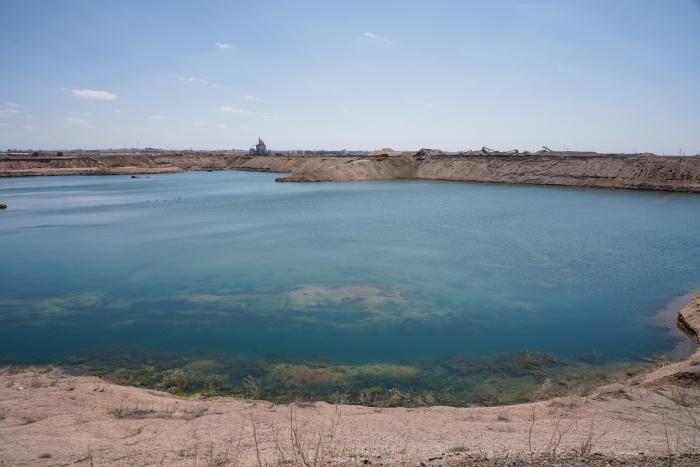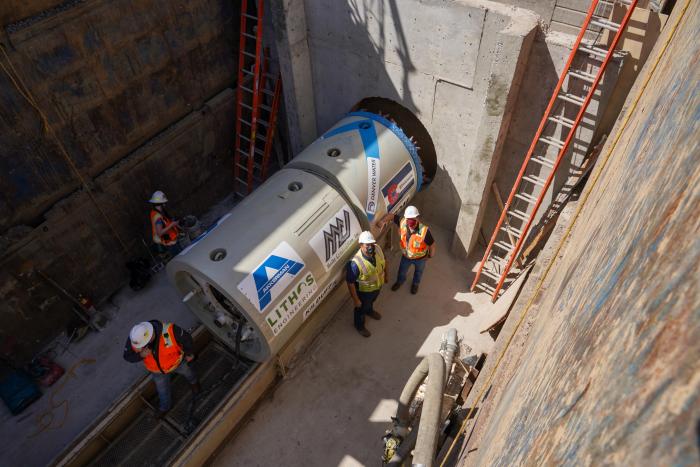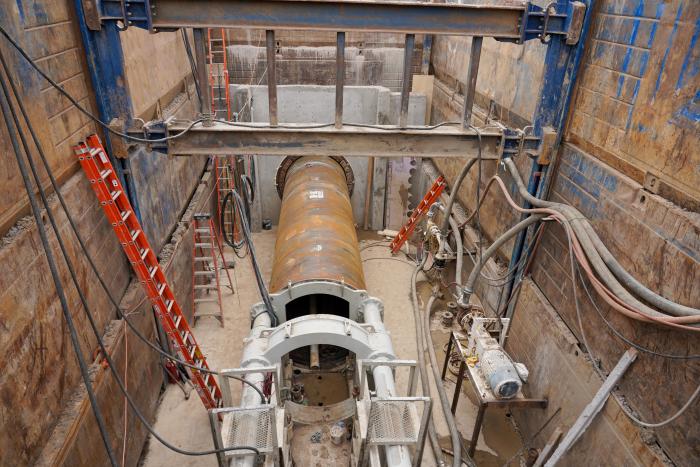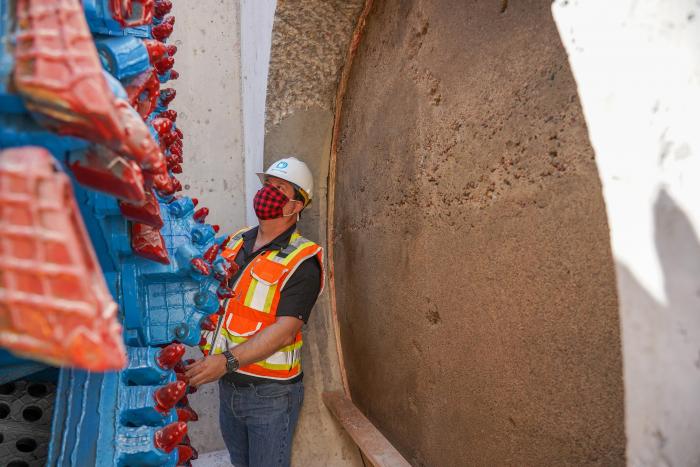Digging into the future on Colorado’s Eastern Plains
Drive northeast of Denver and it’s hard to miss the small lakes, big piles of sand and large holes that dot the landscape along the South Platte River valley next to Interstate 76 and U.S. Highway 85.
The area in Adams and Weld counties has long been home to a number of mining operations for sand and gravel.
Once the mining is done, giant holes are left in the ground.
Those holes are now being snatched up by Front Range cities and water utilities to store water. They’re an alternative to building new reservoirs in the mountains and foothills.
Denver Water owns nine of these old gravel pits as part of its Downstream Reservoirs Program.
Four of the pits, the Bambei-Walker and Welby reservoirs near Commerce City and the Dunes and Tanabe reservoirs near Henderson, are now being used to store water.
The remaining five pits are still being developed, including two located in Fort Lupton.
Turning the old gravel pits into new reservoirs is a long process.
Once mining operations are completed, Denver Water removes additional material if needed, to increase storage and then grades the bottom and sides to construct the reservoir. The pits also need to be connected to the South Platte River, either via a canal or directly.
Denver Water’s Lupton Lakes site is comprised of two gravel pits. The south pit is still an active mine. The north pit’s mining days are over, and the sides have been constructed and the bottom graded in preparation for its new life as a water reservoir.
In April, construction crews began a tunnel to connect both future reservoirs with the river.
The tunnel, 800 feet long, goes under U.S. Highway 85. Crews used a boring machine to drill through the sandy ground.
The boring machine looks like a giant pipe with a 62-inch-diameter cutting blade on the front. A large hydraulic jack slowly pushes the machine from the back and shoots water through the front to loosen the sand as the blade cuts through the ground. The machine moves slowly, taking 2 to 3 hours to dig through 20 feet of sandy dirt.
As the machine moves forward, crews place 20-foot-long sections of pipe into the hole. The sections will be the exterior walls of the tunnel.
The construction process also involves building a water inlet/outlet structure that will connect the tunnel to the river. The structure will channel water from the river into the reservoirs and back out again.
The Lupton Lakes reservoirs are part of Denver Water’s long-term water strategy and are expected to be operational by 2036 at a cost of around $124 million.
Once complete, all nine of Denver Water’s downstream reservoirs will be able to collectively store around 32,000 acre-feet of water — that’s around 10.4 billion gallons. The reservoirs will not be used for recreational purposes.
How are the downstream reservoirs used?
The downstream reservoirs make the utility’s water system more diverse, flexible and sustainable.
“The goal of the downstream reservoirs is to be more efficient with our water supplies, particularly the water we bring over from the West Slope,” said Ryan Stitt, Denver Water’s downstream reservoirs program manager.
The reservoirs allow Denver Water to reuse water brought over from the West Slope after the water has gone through customers’ homes. The water is cleaned and treated at wastewater facilities and released back into the South Platte River where some of it can be captured and stored in the downstream reservoirs.
Denver Water is one of many users who have water rights on the South Platte River. Some users have water rights on the river that are older and more “senior” to Denver Water’s rights. That means Denver Water must ensure they get their legal share of water.
By using downstream reservoirs, Denver Water can collect and store water in its mountain reservoirs ahead of more senior water rights holders. The utility can then release water stored in the downstream reservoirs as a replacement.
The replacement water satisfies the needs of water users such as farmers, ranchers or other communities downstream of the old gravel pits. This is an operation known in the water supply industry as an exchange.
“Before we had these reservoirs, we weren’t able to make use of all of the reusable water available to Denver Water and it went down the South Platte River,” Stitt said. “Now we have new places to store it so that we can increase our water reuse.”





